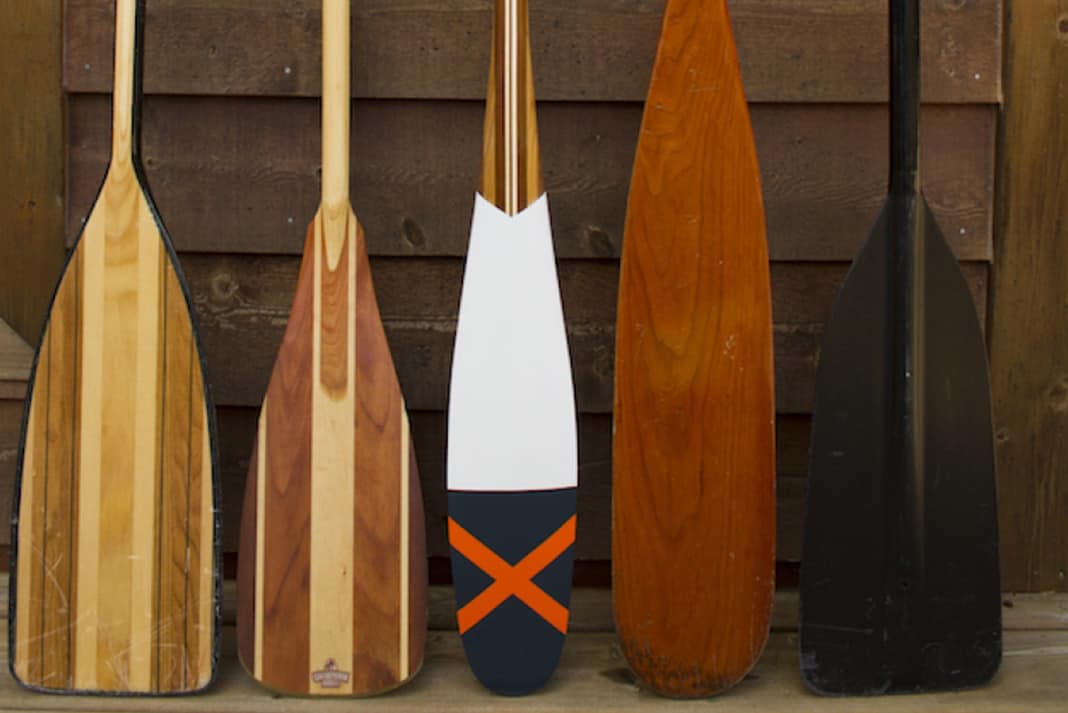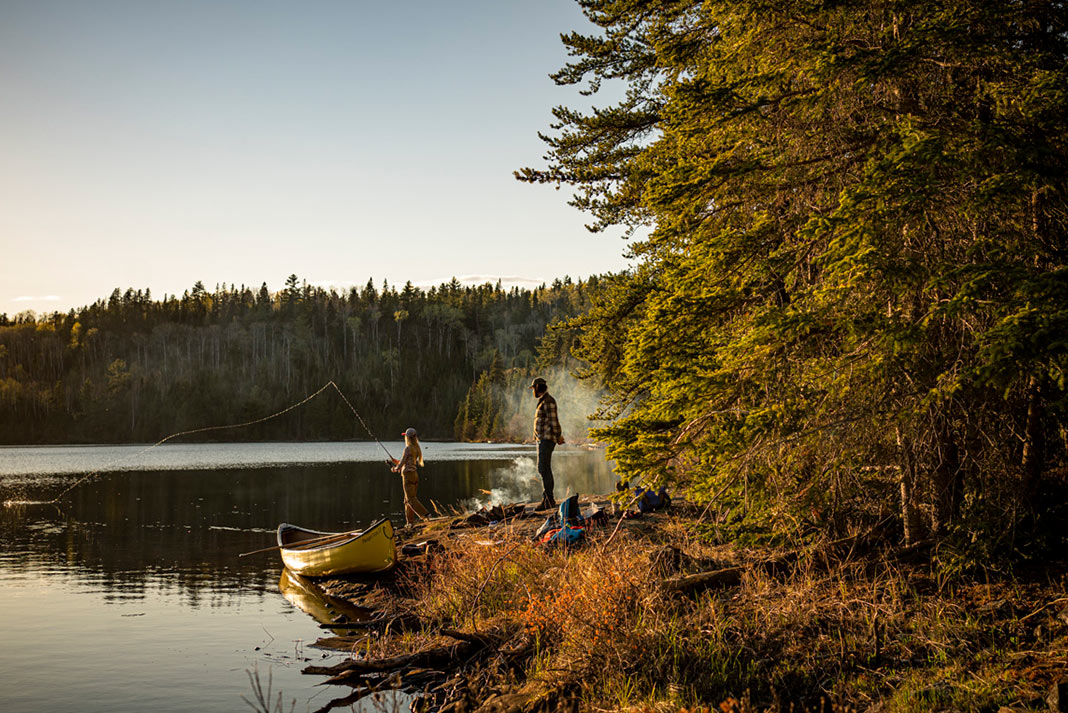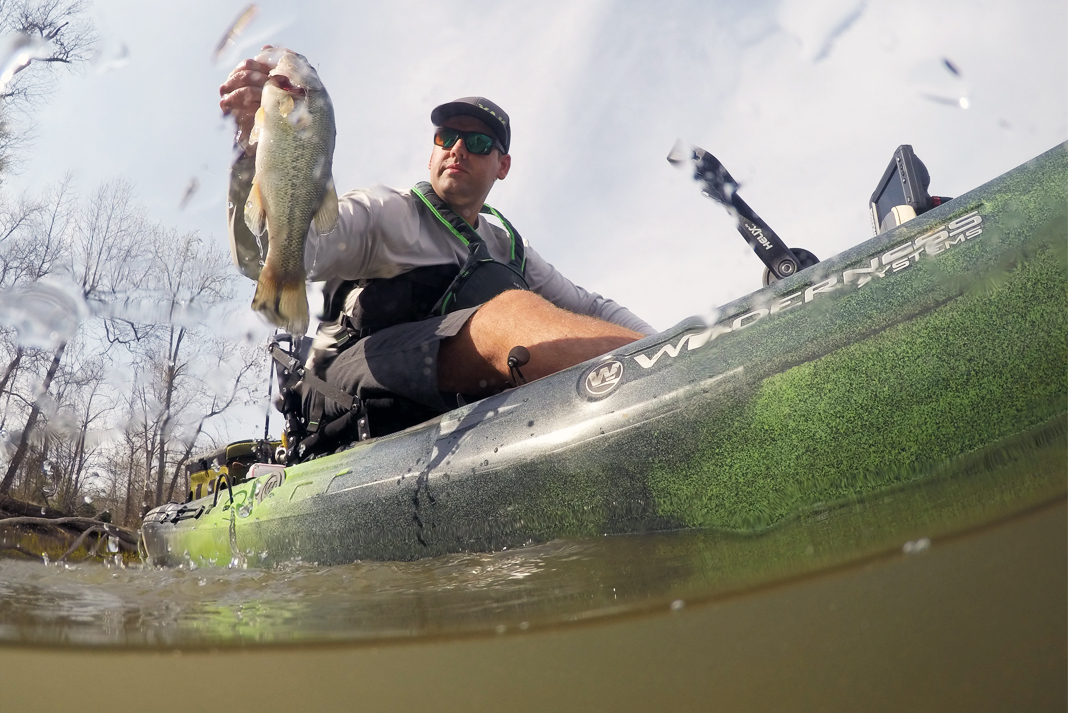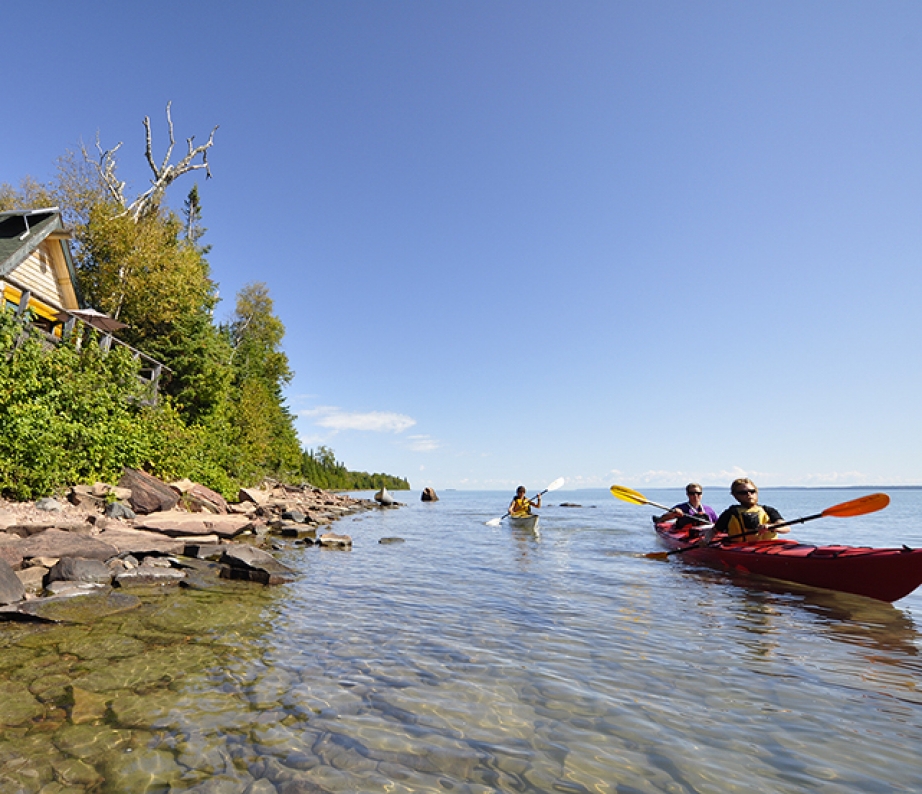At their most basic, canoes and kayaks are both human-powered small craft usually propelled with a paddle. Both kayaks and canoes are produced in a broad range of designs appropriate for any paddling situation, from quiet backwaters to raging whitewater.
Kayaks are usually propelled using a two-bladed paddle, alternating strokes on each side of the boat. Canoes are typically paddled with a single-bladed paddle. A variety of techniques are used to keep a canoe moving straight through the water, from skilled paddle strokes to switching sides with the paddle periodically.
The most significant difference between kayaks and canoes is that canoes are open on top. Kayaks have decks covering the top of the boat and a cockpit where the paddler sits. Canoes have an open design stiffened with gunwales and thwarts. Paddlers usually sit lower in kayaks, closer to the water, in a seat with a backrest. Most canoes have seats mounted higher off the bottom of the hull, so the paddler can sit or kneel, depending on the situation.
Kayaks often have hatches and bulkheads that provide floatation and storage for camping equipment. Touring kayaks intended for open water paddling frequently have a rudder or skeg to help paddlers control them in the wind.
Canoes rarely feature rudders and are generally simpler and lighter than kayaks of the same size and style. Their open design makes it easy to load them with large packs, barrels or coolers for camping.
Canoe pros and cons
Canoe pros
The most significant advantages of canoes have to do with cargo capacity, portaging and weight.
Canoes typically have more cargo capacity than similarly sized kayaks and are easier to pack. The open design of canoes makes them easy to load with large packs, coolers, barrels, family members or your canine companion. Kayaks have less cargo capacity and must be loaded through small hatches, so they’re less practical for transporting bulky gear.
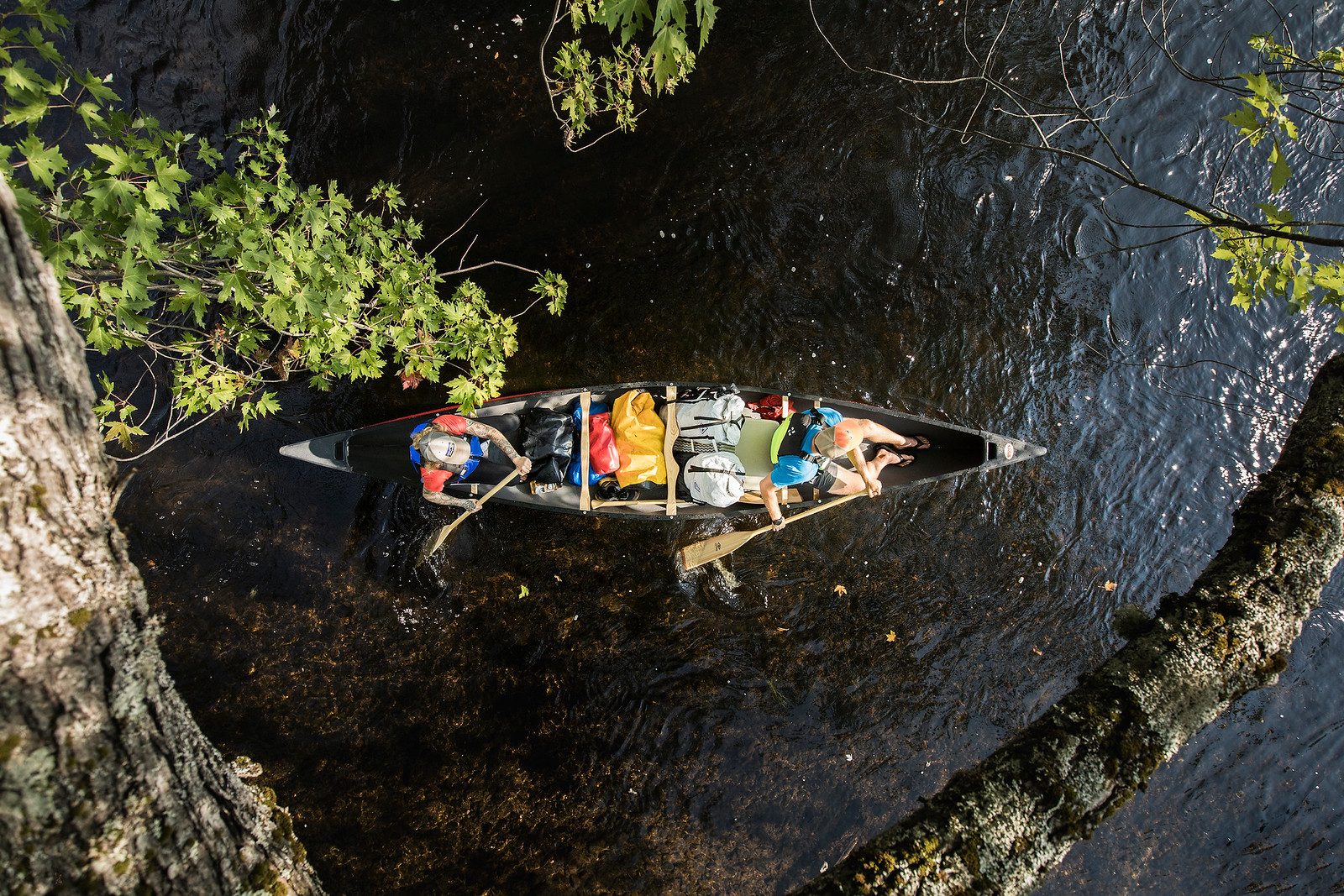
Many popular canoe routes involve portaging, which means to carry your canoe from one lake to another. The best strategy for portaging involves putting your camping gear into a few large dry packs that are easy to manage on the trail. These packs are quick to load in and out of a canoe, but would be impossible to stuff into a typical kayak. A canoe can also be fitted with a portaging yoke, which allows them to be carried down the trail by one person. It’s much easier to portage a canoe this way than it is to carry a kayak down the portage trail. If you are headed on a trip that requires portaging, a canoe is usually superior to a kayak.
Weight is the final factor where canoes have the edge over kayaks. Canoes are not always lighter than kayaks, but they often are. The absence of large decks on canoes reduces the weight of canoes. This makes it possible for a larger canoe to weigh the same as a smaller kayak. Tandem canoes often weigh the same or less than similarly sized solo touring kayaks made of the same material, which makes them a favorite for paddling with a friend. Weight is a big advantage for portaging, but it’s also helpful for everyday use when carrying your boat to the put-in or loading it onto and off of vehicles.
Canoe cons
The most significant disadvantages of canoes are their performance in the wind and waves, and the need to learn a few paddle strokes to control them efficiently.
Canoes are usually harder to paddle in the wind than kayaks. The open design of canoes catches more wind and creates more drag than the closed design of kayaks. Canoes are also deeper than kayaks and paddlers sit higher in the boat than they do in kayaks. These factors combine to make canoes more challenging to control in strong winds than kayaks.
Big waves are another challenge for canoes. If waves are big enough, they can splash over the bow or the stern of a canoe, filling it with water. Specialty whitewater canoes deal with this problem by filling the canoe with large airbags, but the decks on kayaks do a better job of keeping water out. In general, kayaks handle waves better than canoes.
You can keep a canoe moving straight by switching sides with your paddle or using a two-bladed kayak paddle, but most people choose to learn a few specialty paddle strokes to help control their canoe. Learning canoe strokes isn’t difficult, but it is an extra step beginners need to consider when they’re choosing a new boat. It’s easier to jump into a kayak for the first time and go where you want to go than it is to do the same thing in a canoe.
Kayak pros and cons
Kayak pros
The biggest advantages of kayaks are their ease of use and their performance in wind and waves.
Kayaks use a two-bladed paddle and alternate forward strokes on either side of the boat. This makes it more intuitive to keep a kayak moving straight through the water than a canoe. Touring kayaks with rudders are even easier to use—you just press with your foot and your kayak goes in that direction. These factors make it easier to get into a kayak for the first time and have success controlling the boat.

The covered design of kayaks makes them easier to control in the wind. Kayaks are also shallower than canoes, and the paddler sits closer to the water. This means kayaks catch less wind and have less wind drag than canoes. When the wind is howling, a kayak is much easier to control than a canoe.
Kayaks also have an advantage in large waves. Waves that would swamp a canoe roll off the decks of a kayak. Kayaks with small cockpits can be fit with sprayskirts keeping water out even if a wave washes over the deck of the boat. Skilled kayakers can paddle their boats in surf or turbulent whitewater without swamping, and those who have learned to roll can right their boats after a capsize without getting water into the cockpit. When it comes to waves, kayaks usually outperform canoes.
Kayak cons
The most significant disadvantages of kayaks are weight and limited storage capacity.
Kayaks can be heavier than canoes. Decks, bulkheads, comfortable seats and hatches all add weight. This means even smaller recreational kayaks can tip the scales at weights that make them difficult for some people to lift onto the roof of the car for transport. Specialized materials can lower the weight of kayaks dramatically, but these materials can also be used to build remarkably light canoes. Any way you slice it, on average, a kayak will weigh more than a similarly sized canoe made from the same materials.
Decks, hatches and bulkheads make kayaks more seaworthy, but they also make them more challenging to load. The small hatch openings in kayaks require packing camping gear in multiple, small dry bags. These bags are then loaded into the kayak one at a time until the storage compartments are full. This arrangement works fine for coastal touring trips where you’ll only load and unload the kayak once per day. It doesn’t work as well for trips with multiple portages like those found in the Boundary Waters Canoe Area Wilderness or Quetico Wilderness.
Difference between kayak and canoe
Size: Which is bigger?
Canoes and kayaks are both built in a range of sizes. Some tandem touring kayaks are more than 20 feet long. Specialty canoes built for large groups of paddlers can be even longer, so there’s no easy answer to the question of which style of boat is longer.
Canoes are typically wider than kayaks of the same length. The added width compensates for the fact canoe seats are mounted farther from the water than kayak seats to allow for kneeling. A higher center of gravity makes the boat less stable, so it needs to be wider. This means that a given canoe will usually be wider than a kayak of the same length.
That wider canoe is also likely to be lighter than its kayak cousin. The absence of large decks reduces the weight of canoes, so they tend to be lighter than kayaks, even if made of similar materials. On average though, can we say which one is bigger?

Most canoes purchased are tandem (two-person) models. These canoes are almost always 16 feet long and longer. Most kayaks purchased are solo (one-person) designs. Many of these are recreational kayaks that are under 12 feet long. So, it’s safe to say, the average canoe purchased is larger than the average kayak.
Boat design
The basics of boat design are the same for both canoes and kayaks, and you can gain a decent understanding of how a boat will perform by focusing in on three main factors: length, width and rocker.
All things being equal, a boat that is longer will be faster than a shorter boat. This is particularly noticeable in smaller designs. A very short recreational kayak will be slower. A long sea kayak will be much faster. Most people can easily notice the increase in speed when they switch from a 10-foot kayak to a 12-foot kayak, or a 16-foot canoe to an 18-foot canoe.
All things being equal, a shorter boat will be easier to turn than a longer boat. Small, recreational kayaks turn very quickly. Long, expedition canoes require proper paddling technique to turn quickly.
Increasing the rocker of a canoe or kayak will make it easier to turn. Rocker is the curve of the hull as it runs from the bow to the stern of the boat. If you set a canoe or kayak on the ground, you can easily see the rocker—the bow and stern of highly rockered boats won’t touch the ground. A boat without rocker will touch the ground from the bow to the stern.
More rocker makes a boat easier to turn but also shortens its waterline, and makes it slower than an equal length boat without rocker. Designers have to balance the right amount of rocker for each design, depending on how it will be used. Highly maneuverable whitewater kayaks have lots of rocker. Fast, flatwater racing kayaks have virtually none.
Wider boats feel more stable, and narrower boats move through the water with less effort. The width needs to be balanced against the length of the boat and the height of the seat. Canoes are typically wider than kayaks because their seats are mounted higher off the bottom of the hull. Recreational kayaks are wide for maximum stability. Touring kayaks are narrower and move more efficiently through the water.
Seats
Kayaks get the nod for the most comfortable seats. Recreational and fishing kayaks frequently have elaborate, highly adjustable seats with tall backrests. Canoe seats are usually more basic. The classic canoe seat is a flat bench covered with either cane or nylon webbing. This style of seat allows paddlers to sit and kneel. Some canoes feature molded plastic or composite “tractor seats” that are shaped to match the paddler’s anatomy.
The most elaborate kayak seats are typically reserved for recreational or fishing models. Performance touring or racing kayaks usually have more minimal seating. This is because the comfort of large seats is offset by their weight and complexity. What’s more, a seat with a tall backrest can interfere with some paddling and rescue techniques. These factors become more important in racing and sea kayaks. For all other kayak styles, the added comfort of a large, comfortable seat is welcome.
Kayak paddle vs canoe paddle
Canoe paddles feature a single blade with a grip on the opposite end of the shaft. The top hand holds the grip while paddling and the lower hand holds the shaft near the blade.
Kayak paddles have two blades, one on each end of the shaft. The paddler holds the paddle with both hands and alternates strokes on each side of the boat to move forward or backward. Kayak and canoe paddles are made from a vast range of materials, from aluminum and plastic to wood, to composites like fiberglass and carbon fiber. The majority of canoe paddles are made from wood, while most kayak paddles use synthetic materials. Lower cost materials are tough, but heavy. More expensive materials are lighter and perform better in the water.
A high-quality paddle is worth the investment. Whether you’re paddling a canoe or kayak, you’ll be making hundreds or thousands of paddle strokes in a day. At the end of a long day, you’ll be happy to have a lighter paddle that requires less effort to use.
Is canoeing or kayaking easier?
A single-bladed canoe paddle requires the paddler learn a steering stroke or switch sides to keep their canoe going straight. It isn’t difficult to learn a few strokes, or to switch sides, but many people find that it takes a little more time to get a feel for canoeing rather than kayaking.
The two-bladed kayak paddle alternates forward strokes on either side, and most people who jump into a kayak figure out how to get it moving and pointed in the right direction quickly. What’s more, some kayaks have rudders, which allow you to steer the boat with your feet while paddling forward. The combination of the double-bladed paddle and rudder make it easy to get the hang of kayaking as a beginner. Add to this the fact that kayaks are less affected by wind and waves, and a case can be made that kayaking is easier than canoeing.
Fishing from canoe vs kayak
You can fish from a canoe or kayak, but the choice of which to use depends on where you’ll be paddling. If you’re traveling in classic “Canoe Country,” like the Boundary Waters of Minnesota and Ontario, you’ll want a canoe for efficient portaging. In these situations, you’ll fish from a canoe because it’s the best tool for the trip, not necessarily because canoes are preferred as fishing craft.
Similarly, if you’re hiking in to a remote lake to fish, you may prefer an ultralight canoe to a heavier kayak.
Canoes are also a good choice for tandem fishing. In a canoe there is usually more room between the paddlers than in a tandem kayak. This makes it easier to avoid hooking your paddling partner with your backcast. Tandem boats also allow one person to steer while the second paddler targets the fish.
These exceptions aside, most people prefer to fish from kayaks, especially if they are paddling solo. Specialized sit-on-top fishing kayaks are among the most popular boats among anglers. These kayaks are often wide enough to stand in and sometimes feature pedal foot drives that allow you to keep your hands free for casting.
Sit-on-top fishing kayaks are usually heavy, especially if they are wide enough for standing, so some kayak anglers choose to use more traditional recreational kayaks outfitted with rod holders and other fishing accessories.
Canoe-kayak hybrids
Some boats blur the lines between canoes and kayaks and prove the exception to some of the rules listed above. You can buy a small solo canoe with a seat that’s intended to be paddled with a kayak paddle. Likewise, you’ll be able to find an ultralight solo canoe with small decks on each end that can be loaded with bulky canoe packs. Some recreational kayaks are open on top like canoes. Do you paddle these boats with a canoe paddle or a kayak paddle?

These hybrid designs between canoes and kayaks fill a specialty niche. An ultralight solo canoe with a seat might be a good alternative for someone who prefers a recreational kayak but needs something lighter for cartopping. A canoe with decks might be the perfect choice for a canoe trip that includes large, windswept open lakes along with some stiff portages. The variety of designs available on the market ensures that you can find a canoe or kayak for almost any application, regardless of how specialized.
Tandem kayak vs canoe: Which is best for two people?
Most canoes purchased are tandem canoes. Most kayaks purchased are solo kayaks. This doesn’t mean canoes are better for tandem paddling than kayaks. Nor does it mean kayaks are superior to solo canoes. There are advantages to tandem canoes and kayaks and neither one is a clear winner when it comes to ease of use.
All the advantages and disadvantages of canoes and kayaks come to bear when you are talking about tandem designs. Canoes have more cargo capacity for gear, children and pets than kayaks do. Kayaks are better in wind and waves than canoes. Canoes are often lighter and therefore easier to cartop or portage for a solo paddler, but this matters less if you’re a duo.
One disadvantage of tandem kayaks is the bow and stern paddlers need to coordinate their paddle strokes so they don’t crash their kayak paddles together every so often. This problem is eliminated in large coastal touring designs with more space between the cockpits, but it is a factor in most tandems. Tandem canoeists sit far apart in the boats and typically use single blades paddled on opposite sides, so there is no need to perfectly synchronize strokes.
All these factors combine to give a slight edge to canoes for tandem paddling, especially for families with children or pets, but it really is a personal preference.
Can you use a canoe paddle in a kayak? Or vice versa?
There is no reason you can’t use a canoe paddle in a kayak or a kayak paddle in a canoe. If you use a kayak paddle in a solo canoe, you get the advantage of having a blade on both sides of the boat and the advantage of a lighter craft.
If you paddle your recreational kayak with a canoe paddle you won’t have to hold a long paddle all day long and you’ll cut down on drips coming off the blade into the cockpit. The choice of paddle is entirely up the user, but in most cases, people will start out paddling a canoe with a canoe paddle and a kayak with a kayak paddle.
What came first, canoe or kayak?
Various historical sources place the origin of the canoe at up to 10,000 years ago, while the Arctic skin-on-frame kayak appears to date back about 4,000 years. It is difficult to precisely date the true age of ancient canoes and kayaks because they were made of natural materials that decay with time.
Modern commercial canoes were first mass-produced in the late 1800s. The first canvas on frame commercial kayak designs were popularized in the 1950s. Composite kayaks became available in the 1960s and 70s and rotomolded polyethylene kayaks were first mass produced in the 1980s.
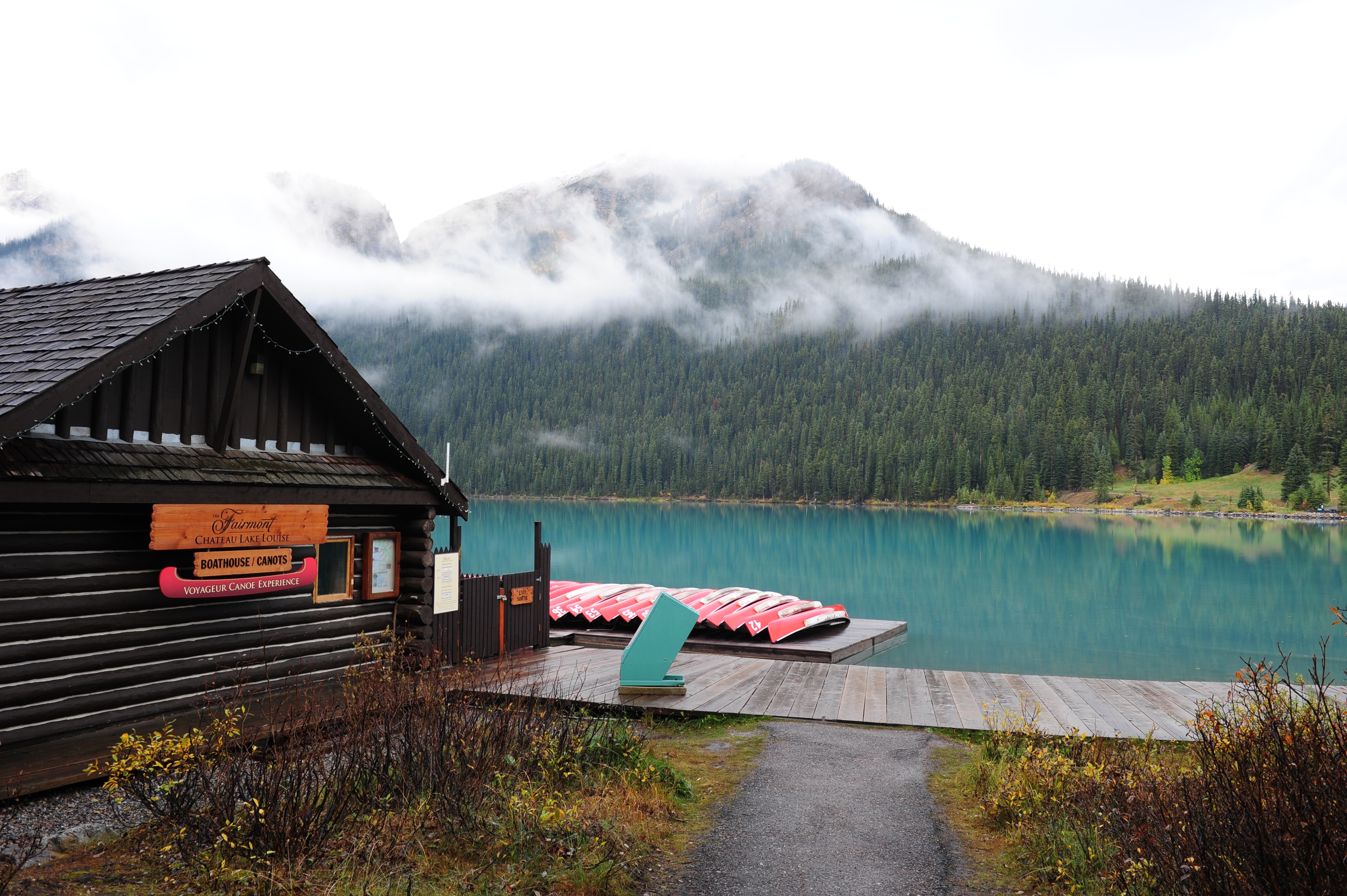
Canoe and kayak rental services
Paddling canoes and kayaks from a local outfitter or borrowing from a friend is a great way to find out what you prefer and are most comfortable with. Wherever you are located, there is a canoe or kayak rental operation close to you. Find an amazing paddling vacation near you in the Paddling Trip Guide.
Canoe and kayak stores
Canoes and kayaks are sold in a variety of locations—from specialty retailers to big box stores to Amazon. The benefits to buying your canoe or kayak in a specialty retailer are numerous. Not only will you get expert advice on your purchase and a sales rep that can answer any of your questions knowledgeably, but a specialty shop will be also familiar with your local regulations so you’re sure to leave with proper safety equipment as well, such as a PFD.
Specialty retailers will also know all the best places to paddle in your area and can connect you with the local paddling scenes. You’re not going to get that kind of service from Walmart.
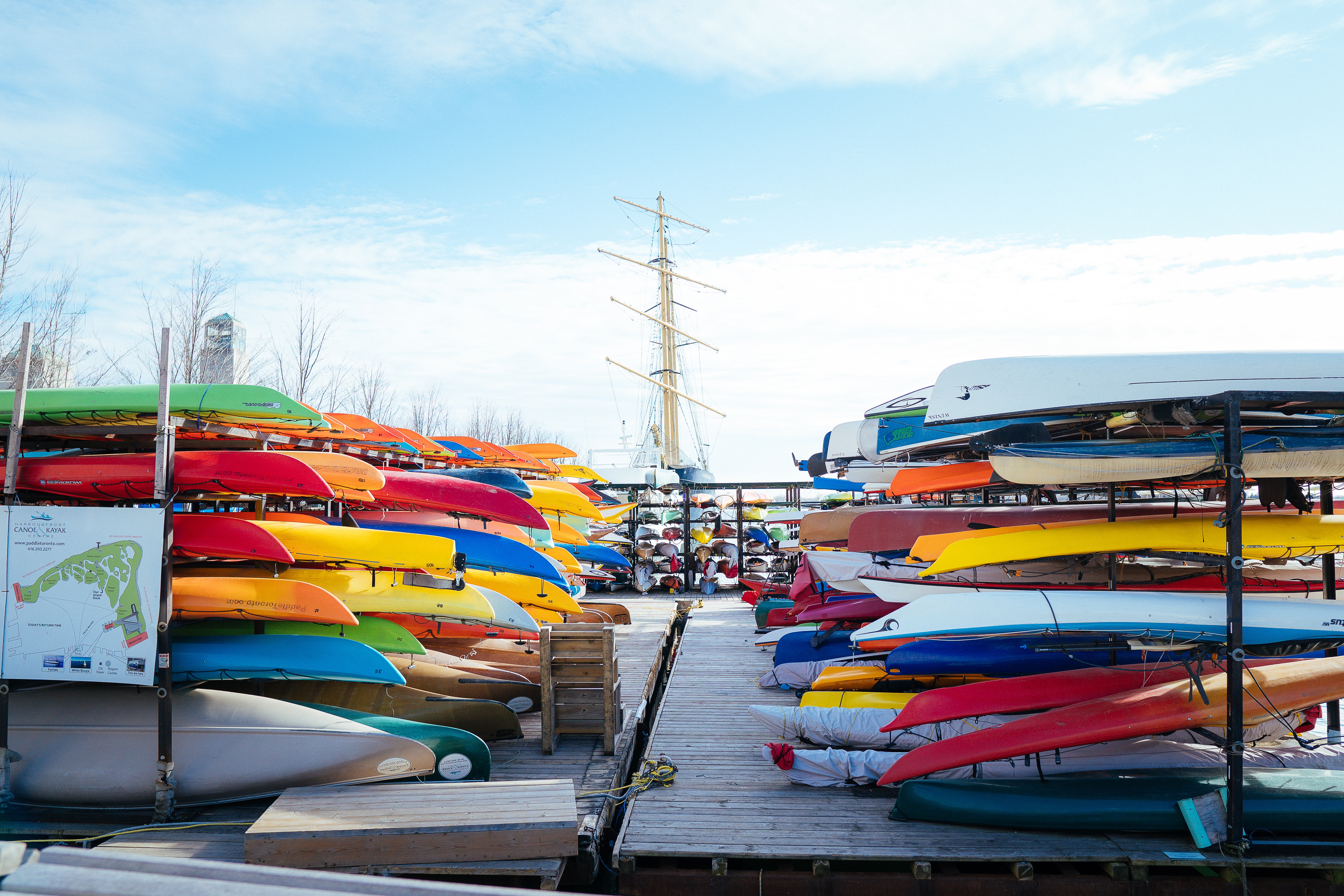
Canoe vs kayak: The verdict
What is better, a canoe or a kayak? The answer is: it depends. The right choice of craft comes down to how you plan to use it and which factors are most important to you. If you’re interested in coastal touring on the ocean or Great Lakes, a sea kayak will be the best choice. If you want an ultralight boat for solo paddling you may prefer a solo canoe.
Fishing kayaks get the edge for anglers who don’t want to compromise on stability and features. Tandem touring canoes are best for classic trips on lakes and rivers. There’s no easy answer to the question of which is best, which is why, if you look in an avid paddler’s garage, you’ll frequently find both.









